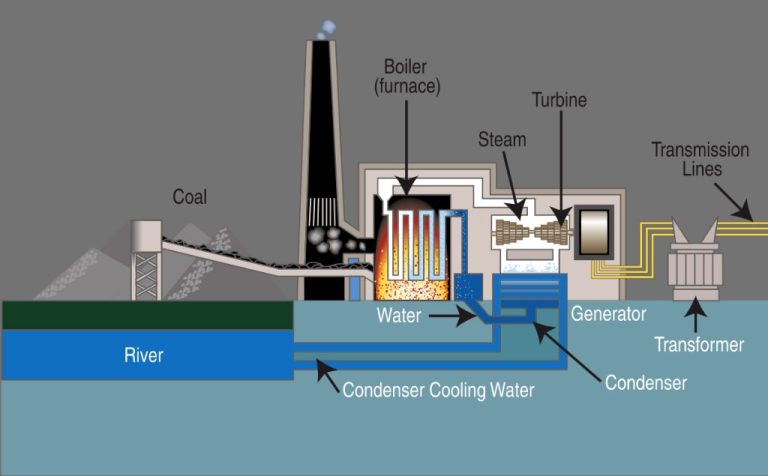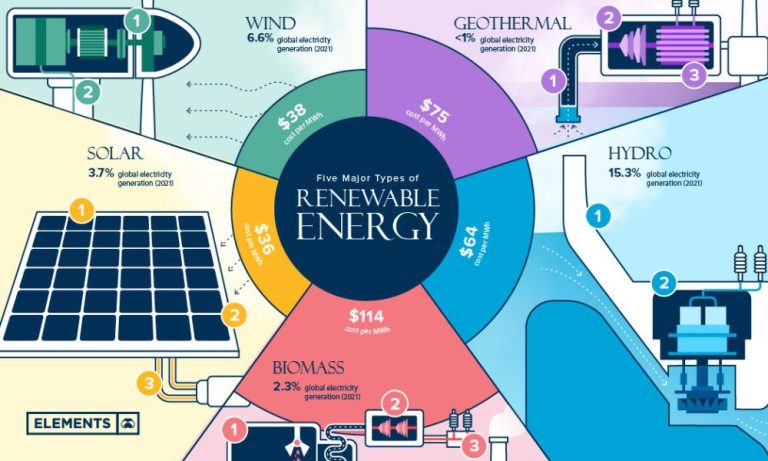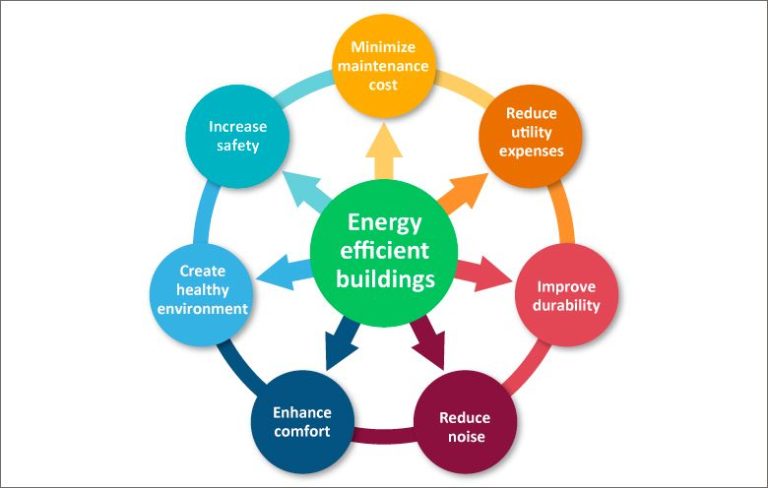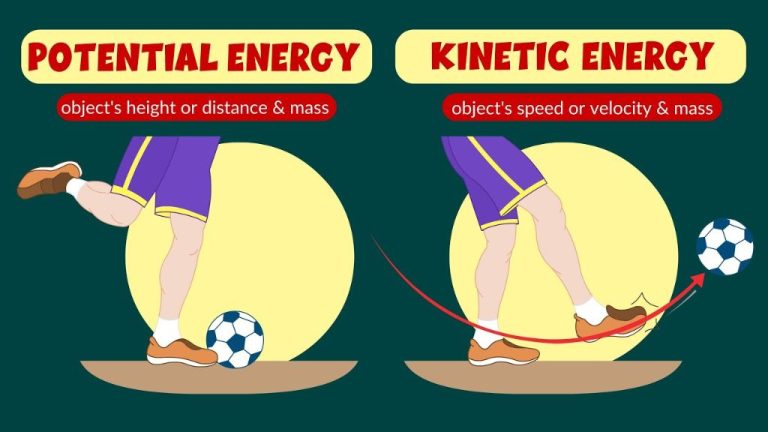Is Thermal Energy Transferred By Electromagnetic Waves?
Thermal energy refers to the internal energy present in a system due to the motion of its atoms and molecules. It arises from the kinetic energy of random movements of atoms and molecules in matter. Thermal energy is directly proportional to the temperature – the higher the temperature, the greater the thermal energy. The transfer of thermal energy occurs via three mechanisms – conduction, convection and radiation.
Electromagnetic waves are waves that are created as a result of vibrations between an electric field and a magnetic field. They are able to travel through space transporting energy from one location to another. Examples of electromagnetic waves include radio waves, microwaves, infrared radiation, visible light, ultraviolet radiation, X-rays and gamma rays. They differ in wavelength and frequency but all travel at the speed of light in a vacuum.
Thermal radiation refers specifically to electromagnetic waves emitted from the surface of an object due to the object’s temperature. It allows for the transfer of thermal energy from one object to another via electromagnetic waves. This process does not require direct contact between the objects and can even occur in a vacuum.
Thermal Radiation
Thermal radiation is a form of electromagnetic radiation that transfers heat energy. It consists of infrared rays that are emitted by all objects above absolute zero temperature. Thermal radiation is sometimes described as infrared heat radiation since infrared light lies within the thermal radiation spectrum (Wikipedia).
Infrared radiation is part of the electromagnetic spectrum, which includes radio waves, microwaves, visible light, ultraviolet rays, x-rays, and gamma rays. Infrared radiation has longer wavelengths than visible light, so it cannot be perceived directly by human eyes. However, we can feel infrared radiation in the form of heat from sources like the sun, fire, or hot objects (Baird).
All objects above absolute zero temperature emit thermal radiation as a result of the thermal motion of atoms and molecules within them. The hotter the object, the more infrared radiation it emits. Infrared sensors and cameras can detect this radiation and create images based on temperature variation, which is why they are used extensively for thermal imaging and remote temperature measurement.
Blackbody Radiation
Blackbody radiation refers to the electromagnetic radiation emitted by an idealized physical body, called a blackbody, that absorbs all radiation incident upon it and reflects none of it. The emission spectrum of a blackbody is determined solely by its temperature.
As a blackbody is heated, its emission spectrum shifts to higher frequencies and shorter wavelengths. The frequency distribution and intensity of the radiation depends only on the object’s temperature, which is a property called thermal equilibrium. This effect allows materials to emit electromagnetic radiation based solely on their temperatures.
The concept of blackbody radiation was first proposed by Gustav Kirchhoff in 1859. The theoretical model was developed further by a number of scientists, including Max Planck, who used it to derive his law of radiation and propose the quantum nature of light. According to Planck’s law, the spectral radiance of electromagnetic waves at all frequencies increases as temperature increases (Wikipedia, 2023).
Blackbody radiation spectra can be approximated by Planck’s law of blackbody radiation, which describes the amount of spectral radiance at a given temperature and frequency. This law demonstrates that hotter objects emit radiation at a higher intensity and frequency than cooler objects (Britannica, 2023).
Greenhouse Effect
The greenhouse effect is the process through which heat is trapped near Earth’s surface by certain gases in the atmosphere. These gases, known as greenhouse gases, allow incoming visible light from the sun to pass through but absorb outgoing infrared radiation emitted by the Earth’s surface. This imbalance between incoming and outgoing radiation leads to heating of the lower atmosphere and surface. The main greenhouse gases responsible for this effect are water vapor, carbon dioxide, methane, nitrous oxide, and ozone.
As sunlight reaches the Earth’s surface, the ground absorbs some of this solar energy and warms up. The Earth’s surface then emits thermal radiation back toward space. Greenhouse gases in the atmosphere allow visible light to pass through but absorb some of the outgoing infrared radiation, redirecting some of this energy back to the Earth’s surface. This absorption and re-emission of infrared radiation warms the lower atmosphere and surface. Without the greenhouse effect, Earth’s average temperature would be around 0°F (-18°C) rather than the present 57°F (14°C).
While the greenhouse effect is essential for maintaining habitable temperatures on Earth, human activities have increased the concentrations of greenhouse gases, amplifying the natural greenhouse effect. This enhancement, known as the enhanced greenhouse effect, is contributing significantly to global warming and climate change (Source 1, Source 2).
Microwaves
Microwave ovens use electromagnetic waves to heat food. Microwaves are a form of electromagnetic radiation with wavelengths ranging from one meter to one millimeter and frequencies between 300 MHz and 300 GHz (Wikipedia, 2022). Inside a microwave oven, a magnetron generates microwaves that are directed into the interior oven cavity. These microwaves interact with polar molecules such as water in food, causing the molecules to rapidly rotate and generate thermal energy through molecular friction and dielectric heating effects (Sciencedirect, n.d.). This efficient heating occurs as the microwaves cause water molecules in food to vibrate at very high frequencies, generating friction and heat while the food itself does not get hot. Microwave heating is particularly effective for liquid water rather than frozen water, where molecule movement is more restricted. This makes microwave ovens well suited for rapid defrosting and reheating operations (Wikipedia, 2022). Overall, microwave ovens demonstrate how electromagnetic waves in the microwave frequency range can effectively transfer thermal energy for rapid heating of food.
Radiative Cooling
Radiative cooling is the process by which objects lose heat through infrared radiation emission towards outer space1. All objects above absolute zero emit infrared radiation corresponding to their temperature. The Earth’s atmosphere is partly transparent to infrared radiation in certain wavelength bands called atmospheric windows. Radiative cooling takes advantage of these atmospheric windows to emit infrared radiation directly to space2.
Radiative cooling can be passive, simply relying on an object’s natural infrared emissions. It can also be enhanced through the use of specialized coatings or materials designed to maximize infrared emissivity in the atmospheric windows. Such radiative cooling coatings or panels can be applied to rooftops or other surfaces to provide passive cooling without energy consumption3. Radiative cooling has potential as an energy-efficient alternative to air conditioning in buildings.
Remote Sensing
Remote sensing using satellites is a key way to measure land surface temperature (LST) on a global scale. Satellites have thermal sensors that can detect the infrared radiation emitted from Earth’s surface in order to determine LST. According to a review article, “Satellite remote sensing provides the best way to measure LST and generate various LST products at regional and global scales” (https://agupubs.onlinelibrary.wiley.com/doi/full/10.1029/2022RG000777).
One of the most widely used global LST datasets comes from polar-orbiting satellites that provide complete global coverage twice per day. As described in a 2018 study, “et al. An assessment of methods and remote-sensing derived covariates for regional predictions of 1km daily maximum air temperature. Remote Sens Environ” (https://www.nature.com/articles/sdata2018246). The Copernicus Global Land Service also provides LST data derived from satellite measurements, stating “The Land Surface Temperature (LST) is the radiative skin temperature of the land surface physically derived from remotely sensed satellite data” (https://land.copernicus.eu/global/products/lst).
Overall, thermal infrared sensors on satellites allow for remote sensing of land surface temperature by detecting the infrared radiation naturally emitted from Earth’s surface.
Solar Heating
The sun’s infrared radiation is one of the ways that thermal energy is transferred through electromagnetic waves. Approximately half of the sun’s energy that reaches Earth is in the infrared part of the electromagnetic spectrum. When sunlight hits the Earth’s surface, objects and land masses absorb the infrared radiation and convert it into heat energy. This is known as the greenhouse effect. The infrared energy from the sun is absorbed by surfaces and causes molecular vibrations which manifests as heat. This solar heating effect is harnessed through various technologies.
Solar heating systems like solar water heaters and solar panels utilize the sun’s infrared radiation to provide heat energy. Solar water heaters contain a solar collector which absorbs the infrared radiation and transfers the heat to water. The warmed water can then be used directly or channeled into a home’s water heater system (https://royal-infrared.es/solar-and-royal-infrared-panels/). Solar heating panels and heaters follow a similar principle where the infrared energy is absorbed and converted into household heat. Well designed solar heating systems can provide a substantial amount of a home’s heating needs from harnessing the infrared energy from the sun.
Thermal Imaging
Thermal imaging cameras detect thermal radiation and produce images or video of that radiation, also called thermograms. Thermal radiation is electromagnetic radiation emitted by all objects above absolute zero according to black body radiation laws. Infrared cameras allow people to see objects in the dark and through obscurants like smoke, fog, and haze. They detect radiation in the infrared range of the electromagnetic spectrum, which is emitted as heat by objects instead of reflected visible light.
Some common applications of thermal imaging include building inspections, mechanical systems maintenance, surveillance, and firefighting. The technology works by detecting infrared radiation and creating images based on temperature differences between objects. Warm objects like people or animals will appear brighter against cooler backgrounds on the camera’s display (Fluke, n.d.). Modern thermal cameras are sophisticated systems with advanced optics, detectors, electronics, displays and analysis software. Leading manufacturers of thermal imaging cameras include Fluke, Teledyne FLIR, and Seek Thermal (Seek Thermal, n.d.) (Teledyne FLIR, n.d.).
Conclusion
In summary, thermal energy can indeed be transferred by electromagnetic waves. This occurs through thermal radiation, which is the emission of electromagnetic waves from all matter that has a temperature greater than absolute zero. Objects and materials emit thermal radiation based on their temperature – the hotter the object, the more thermal radiation it emits at shorter wavelengths. This allows heat to be transferred between objects that are not in direct contact through the radiation being absorbed. Thermal radiation is responsible for the greenhouse effect on Earth, allows heat transfer through technologies like radiative cooling and microwave heating, and enables thermal imaging for sensing temperature remotely. So in conclusion, electromagnetic waves provide a key mechanism for thermal energy to be transferred between objects and locations.





